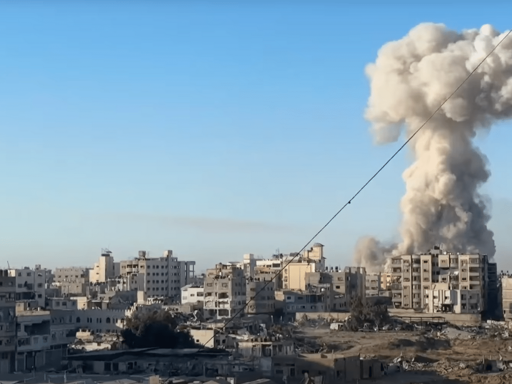In more than two years of war, the Gaza Strip has been subjected to massive bombing by the Israeli occupation army. An estimated total of 200,000 tonnes of explosives, using all types of weapons, missiles and explosive devices from land, air, and sea have bombarded Gaza.
This quantity is equivalent to the total energy of approximately 13 Hiroshima-type nuclear bombs. Inevitably, this raises questions about the extent of the destruction, the nature of the human and material losses, and the area of land affected compared to a similar historical disaster.
The US bomb dropped on Hiroshima weighed around 4 tonnes. It destroyed approximately 13 km², killed approximately 180,000 people immediately and in the following months. In Gaza, Professor Paul Rogers has said that the bombs dropped are:
equivalent to six Hiroshimas.
And, there’s another key difference. The bombings in Gaza are spread across cities and residential neighbourhoods covering large areas. The relentless barrage has caused widespread and continuous destruction, with the systematic annihilation of infrastructure and basic services.
Area of destruction
And, the Gaza Strip covers an area of 365 km², way less than half the size of London, which covers an area of 1,572 km². And, the population in Gaza are trapped in the midst of widespread destruction, with nowhere to go. The Gaza government ministry has reported:
Israel’s war on Gaza has killed a total of 67,183 Palestinians and injured 169,841 others since 7 October 2023.
More than 169,000 people suffered permanent physical injuries, with thousands of cases of amputation and paralysis. Thousands of families have been completely wiped out of the civil registry, and tens of thousands have been displaced.
Medical and educational infrastructure have been ravaged and left barely functioning. Families have lost all their possessions, and been displaced many, many times over. Electricity is scarce, as is water, and communication networks are patchy at best.
Scale
The ongoing war and destruction have created two generations living in insecurity under daily fear, hunger and cold, amid darkness and power cuts. Children sleep on the floor without lights, students write their homework by candlelight, and hospitals operate with extremely restricted means.
Although the explosions are distributed and non-nuclear, the scale of human, social and economic destruction is equivalent to or exceeds the impact of a nuclear explosion on a small city, with long-term effects on future generations.
The real irony lies in the difference between the numerical energy of the explosives and the scale of human and social destruction. Gaza today is not just a geographical area; it is a symbol of ongoing suffering and educational, health and social annihilation. Comparing the explosive yield to the Hiroshima bomb puts the scale of the tragedy into perspective for the world, but it is not enough to convey the psychological and social dimensions of what Palestinian generations are experiencing under this ongoing siege.
Featured image via YouTube screenshot/Gaza News
By Alaa Shamali
From Canary via this RSS feed


